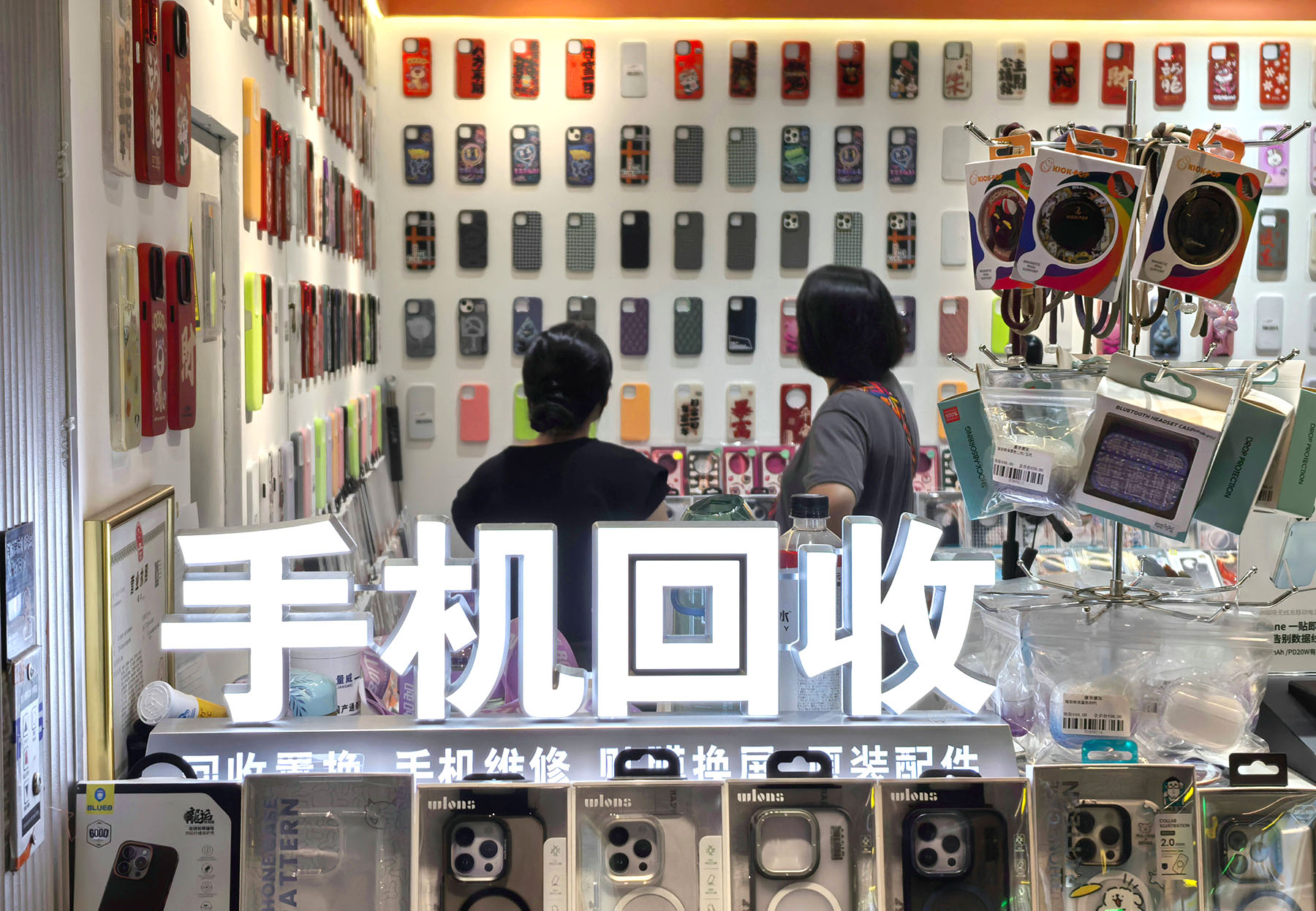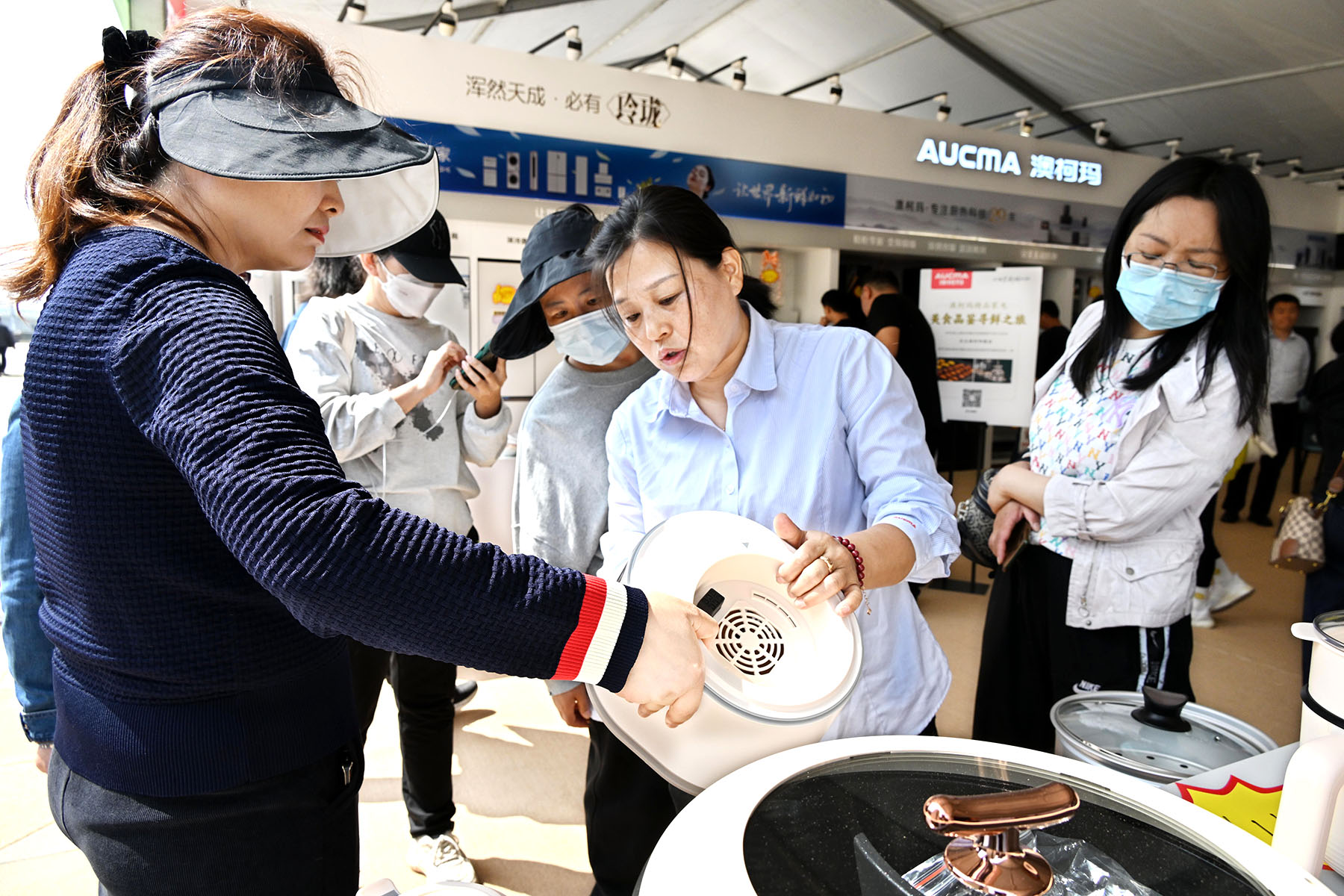Secondhand goods export markets to be expanded to make up for oversupply

Editor's note: China Daily is publishing a series illustrating the country's efforts to achieve its carbon peak and carbon neutrality goals.
National legislators and environmental experts have called for streamlined policies to promote secondhand exports — particularly smartphones — to meet a surge in global demand, a rise in domestic trade-in programs, and the climate benefits of the reuse of goods.
In addition to tax incentives, they emphasized the need to accelerate the development of standards for secondhand exports to ensure product quality and market credibility.
They made suggestions on the issue to the National People's Congress against the backdrop of the country's large-scale consumer goods trade-in initiative, which is expected to result in oversupply in the country's burgeoning secondhand market.
READ MORE: Booming recycling market benefits environment
China this year announced a raft of extra measures to promote the consumer goods trade-in program amid a broader push to boost consumption and spur economic growth.
According to a guideline released by the National Development and Reform Commission and the Ministry of Finance in January, China will expand the number of home appliance categories eligible for subsidies to 12 this year, from eight last year.
In March, the State Council unveiled an action plan to spur the large-scale trade-in and upgrade of consumer goods.
Wang Yi, a member of the NPC Standing Committee and the NPC Committee of Environmental Protection and Resources Conservation, expects a sharp surge in the number of secondhand smartphones on the market.
The stockpile of discarded mobile phones in China already exceeds 2 billion phones, and it is expected to keep growing by 400 million annually, according to Wang.
"As 5G becomes universal and the trade-in program gains further momentum, China is bracing for a dramatic rise in discarded mobile phones," he said.
Liu Rui, an environmental expert with the Yangtze Delta Region Institute at Tsinghua University, Zhejiang, expects to see an oversupply of many products with high reuse value.
The initiative significantly expanded the secondhand market last year, according to Liu, head of the institute's Department of Ecological Environment, who is also an NPC deputy.
Last year, over 6.8 million vehicles, more than 62 million home appliances, and over 1.38 million electric bicycles were involved in the trade-in initiative, she noted.

She emphasized that the surge in discarded secondhand goods has overwhelmed domestic recycling and resale networks, straining their capacity.
End-of-life vehicle recycling, for example, hit 8.46 million vehicles last year, jumping year-on-year by 64 percent, she said.
"While the trade-in policy has unlocked domestic demand potential, it has also accelerated the saturation of the secondhand market, creating new opportunities for emerging business models such as cross-border exports of used products," she said.
Wang agreed. "Promoting the export of secondhand mobile phones can alleviate China from its disposal burden, unlock idle resources and increase revenue," he said.
He noted the potential of such exports in contributing to the domestic and international endeavor to reach carbon neutrality.
By extending the lifespan of mobile devices and reducing resource consumption and environmental pollution, the use of secondhand phones can significantly improve resource efficiency, he said.
Quoting an estimate from Paris-based telecom company Orange, formerly known as France Telecom, Wang said reuse is a powerful driver for promoting green consumption and a crucial pathway toward green and low-carbon transformation.
The estimate shows that, compared to new products, the recycling of secondhand products can reduce carbon emissions by 90 percent.
Wang said there is a huge demand for secondhand phones from the international market.
"Driven by targets in carbon reduction, the European market is rapidly shaping a new landscape for secondhand electronics consumption," he said.
Orange, for instance, has set goals to cut emissions by 45 percent by 2030 and to reach net-zero emissions by 2040. To realize the goals, the company is aggressively expanding its refurbished cellphone business, aiming to source 10 percent of its total sales from secondhand devices this year.
This means that Orange alone will create an annual demand for over a million high-quality refurbished cellphones. "As global climate action intensifies, such demand is expected to grow further," Wang said.
He also noted the massive demand for secondhand cellphones in Southeast Asia and Africa.
"Consumers in these areas prioritize cost-effective communication devices to meet basic needs. China's refurbished cellphones, with their functional reliability and competitive pricing, perfectly align with the requirements in these markets," Wang said.

Some developed economies such as Europe, the United States and Japan have introduced policies to support the export of secondhand mobile phones, he said. The US, for example, has developed guidelines for the export of secondhand equipment to systematically address export challenges.
The International Data Corporation has estimated that worldwide shipments of used smartphones, including officially refurbished and used smartphones, reached 309.4 million units in 2023, up by 9.5 percent from 2022.
It projects that used smartphone shipments will reach 431.1 million units in 2027, with a compound annual growth rate of 8.8 percent from 2022 to 2027.
Research by the China Association of Circular Economy indicates that approximately 80 million secondhand mobile phones were recovered through formal channels in China last year. With an average unit price of 2,000 yuan, the market size of secondhand mobile phones in China could reach 160 billion yuan, it said.
However, China still needs to overcome a series of obstacles to fully tap into the vast international market for secondhand mobile phones.
China currently lacks a comprehensive system of unified national standards for secondhand mobile phones, covering key areas such as device testing and valuation, requirements for sales platform's after-sales service, and export quality certification, Wang said.
The domestic standards have yet to align effectively with internationally recognized certification systems, resulting in higher compliance costs for businesses, he added.
Currently, exporters have to grapple with heavy tax liabilities at home and abroad, eroding profitability.
The combined tax rates for such exports are 30 to 50 percent in China, including 13 percent value-added tax, said Wang. Meanwhile, some countries involved in the Belt and Road Initiative impose 10 to 25 percent tariffs on secondhand phones, which far exceed those in Europe and the US.
Liu recommended that national authorities, including the State Taxation Administration and the ministries of finance and commerce, formulate policies to progressively extend the preferential 0.5-percent VAT rate, currently applicable to used cars, to all secondhand goods.
ALSO READ: Secondhand economy a win-win scenario
She also suggested that the ministries of foreign affairs and commerce negotiate bilateral or multilateral agreements with BRI countries to lower tariffs and consumption taxes on secondhand goods.
Another priority is to optimize customs clearance processes for secondhand products, drawing on the export policies for used cars, she said.
Relevant authorities should reference the used car export policy to appropriately reduce or waive the requirement for submitting historical VAT invoices for secondhand goods during customs declaration, she noted.
Liu recommended the establishment of a green channel for secondhand goods exports to enhance clearance efficiency and bring costs down for businesses.
Pilot programs in regions with strong business ecosystems and mature markets for secondhand goods — such as Shanghai, Shenzhen in Guangdong province and Beijing — can be used as models to gain practical insights into the process of exporting used products, she added.
houliqiang@chinadaily.com.cn


